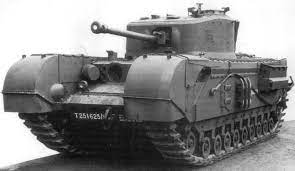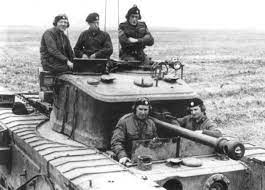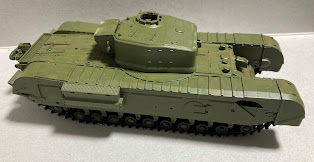Part 1 The wheels and Hull.
The hull was divided into several compartments. Towards the front of the tank, there was the driver's compartment, which housed the driver's seat, controls, and vision devices. The driver had access to periscopes and vision slots to maintain situational awareness while operating the tank.
Let's make the front of the tank.
Next, the wheels and the back.
Track time.
 The upper hull will cover the missing parts.
The upper hull will cover the missing parts.The Churchill Mk VII was a heavy infantry tank used by the
British Army during World War II. It featured a distinctive hull design that
was specifically engineered for durability, protection, and the ability to
traverse challenging terrains.
The hull of the Churchill Mk VII was characterized by its boxy shape and a low profile, which helped to minimize its silhouette and make it a difficult target to hit. It was constructed using welded steel plates, providing excellent armor protection against enemy fire. The front of the hull featured sloped armor plates, offering enhanced resistance against incoming projectiles.
Is it me or does it make you think of a praying mantis?
Adding the side protection.

Rear of the year...
Looking good from behind.A tank needs a turret.
The Churchill Mk VII turret was designed to provide protection to the crew and house the tank's main armament, secondary armament, and observation devices. It had a distinctive rounded shape and was heavily armored to withstand enemy fire.
Secondary armament on the Churchill Mk VII
turret typically consisted of a machine gun. This machine gun, often a .303
caliber Browning, was used for engaging infantry, anti-tank personnel, and
providing close-range defense.
The commander's cupola.
On top of the turret was a cupola that housed
the tank commander, providing him with a 360-degree view of the battlefield.
The cupola featured periscopes and vision slits, allowing the commander to
observe the surroundings and coordinate the tank's actions.
The primary armament of the Churchill Mk VII
turret was a 75mm gun, which was mounted in the front. This gun was capable of
firing high-explosive rounds and armor-piercing projectiles, enabling the tank
to engage both enemy vehicles and fortifications. The turret could traverse
horizontally, allowing the gunner to aim at targets in any direction.
































































Comments
Post a Comment